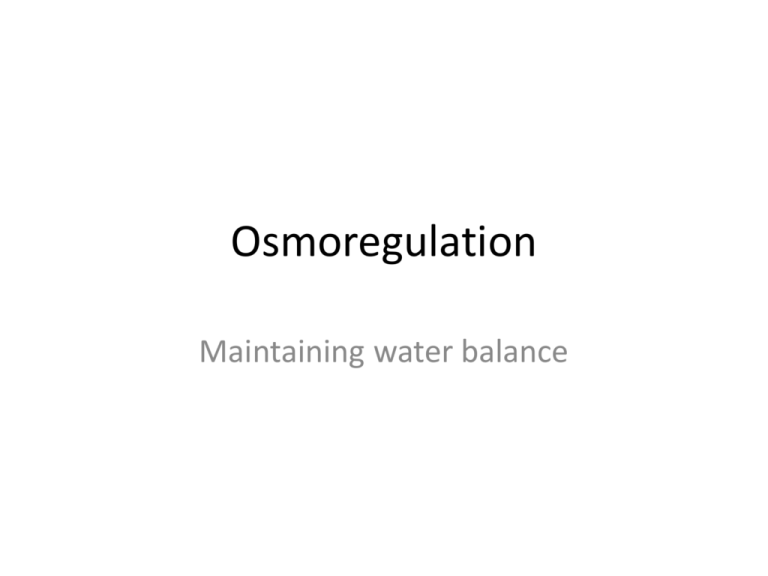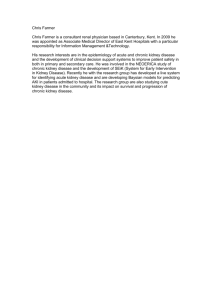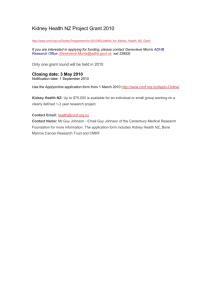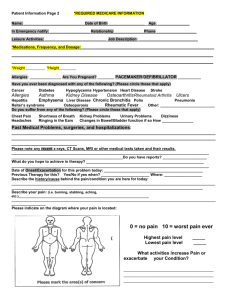Osmoregulation - BiologyUnit2-TSC
advertisement

Osmoregulation Maintaining water balance Today’s goals! • Understand the negative feedback system for water balance in vertebrates (the kidney). • Analyse some data (osmolarity). • Identify structural, physiological and behavioural adaptations to conserve water. Negative feedback system-1 1. Blood pressure decreases 2. Receptors in the hypothalamus detect an increase in blood solutes (!!LESS WATER!!) 3. The hypothalamus releases vasopressin via pituitary gland 4. Vasopressin (hormone) is released into the blood and travels to the kidney 5. Loop of Henley in the kidney reabsorbs more water from the urine 6. Blood pressure increases Negative feedback loop-2 1. Hypothalamus detects increase in blood solutes (!!LESS WATER!!!) 2. Hypothalamus creates a thirst sensation 3. Animal drinks water 4. Blood pressure rises Negative feedback loop-3 1. Blood pressure falls 2. Pressure sensitive receptors in the kidney detect this decrease 3. Kidney releases renin 4. Renin causes adrenal glands to release aldosterone 5. Aldosterone causes the tubules in the kidney to absorb sodium ions water follows and is reabsorbed by the body 6. Blood pressure rises What to remember about the kidney! • After blood is filtered, the kidney plays a part regulating water content of the blood • 2 ways – Directly causing re-absorption of water into the blood (vasopressin) – Indirectly causing absorption of water into the blood by releasing sodium ions (causing water to follow by osmosis) Next • Wednesday we will spend some time on the adaptations of different groups of organisms – Single celled organisms – Birds – Reptiles – Amphibians – Plants – And more!!!! Activity • Complete activity 10.2, examining the data to answer questions 1-6 VIDEO (YAY!!!) • Life in cold blood







